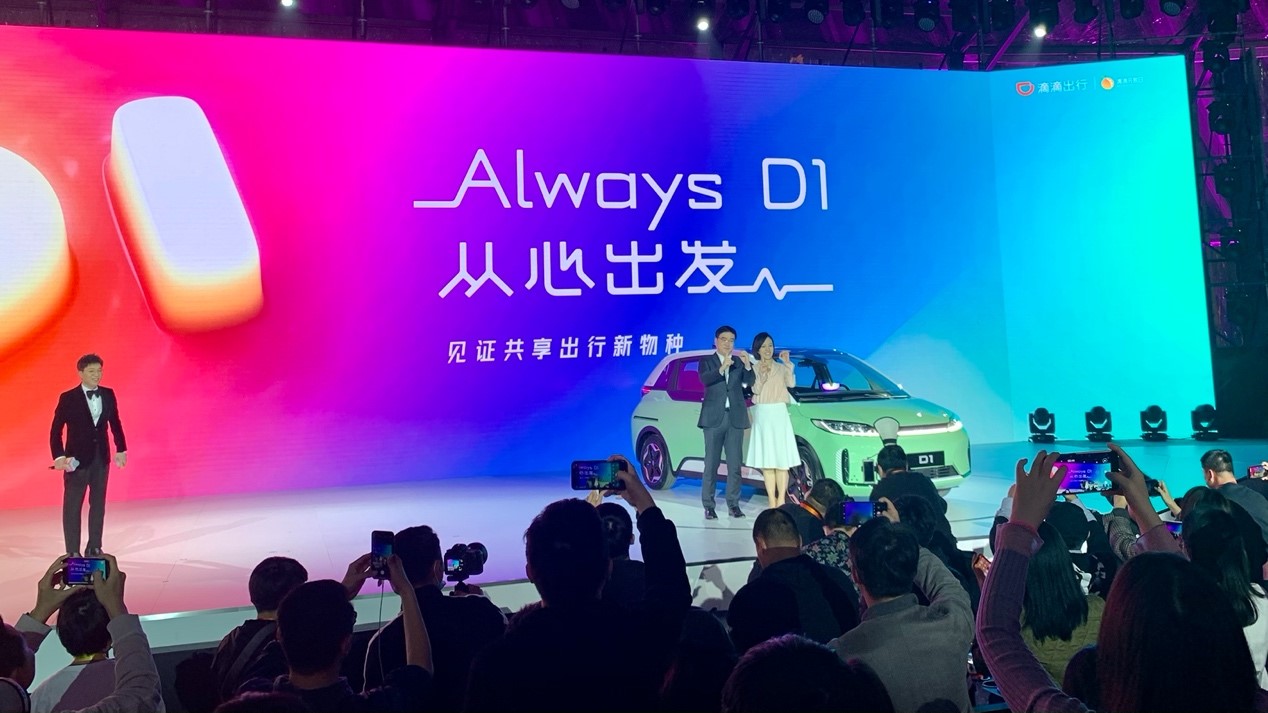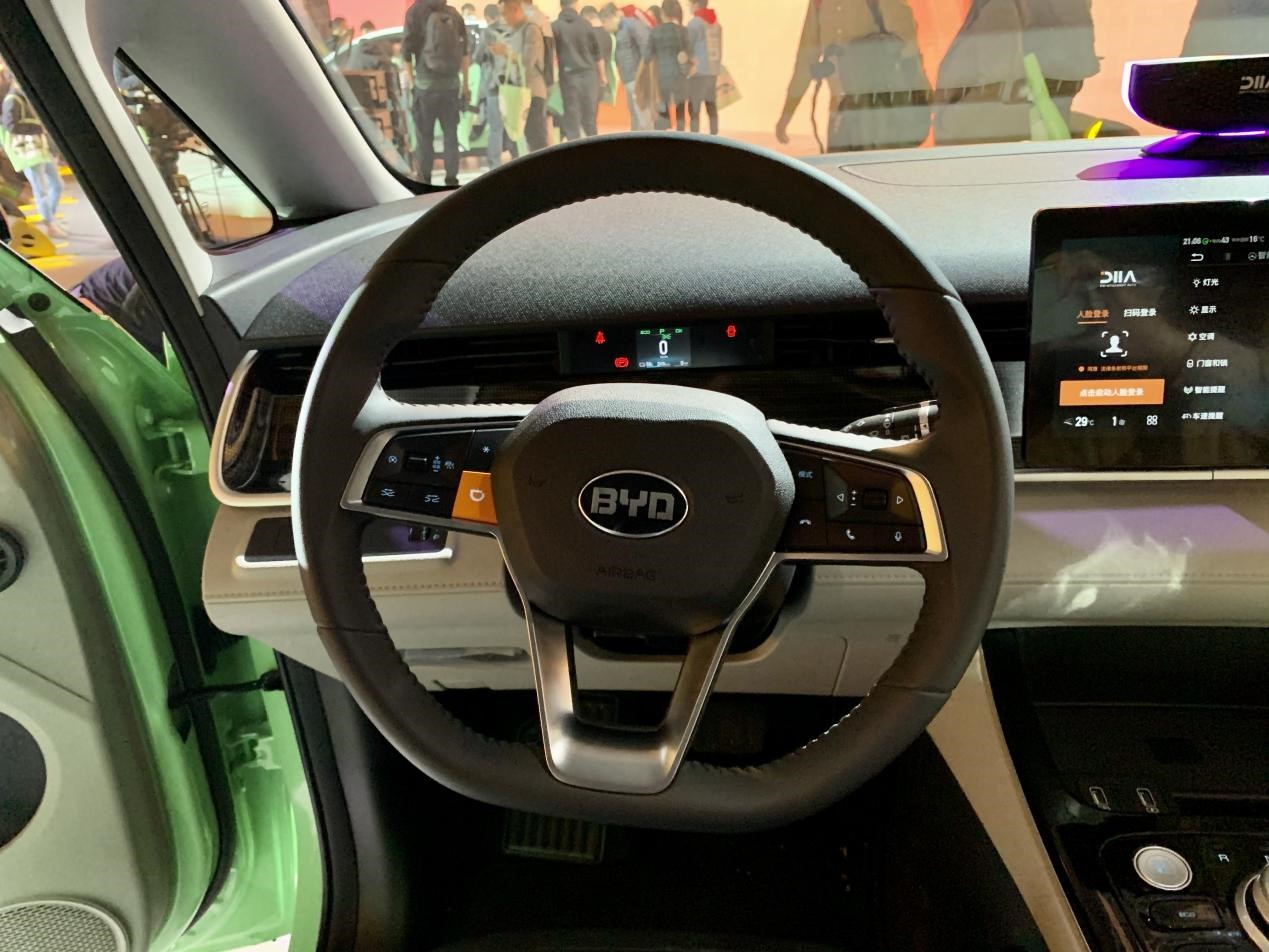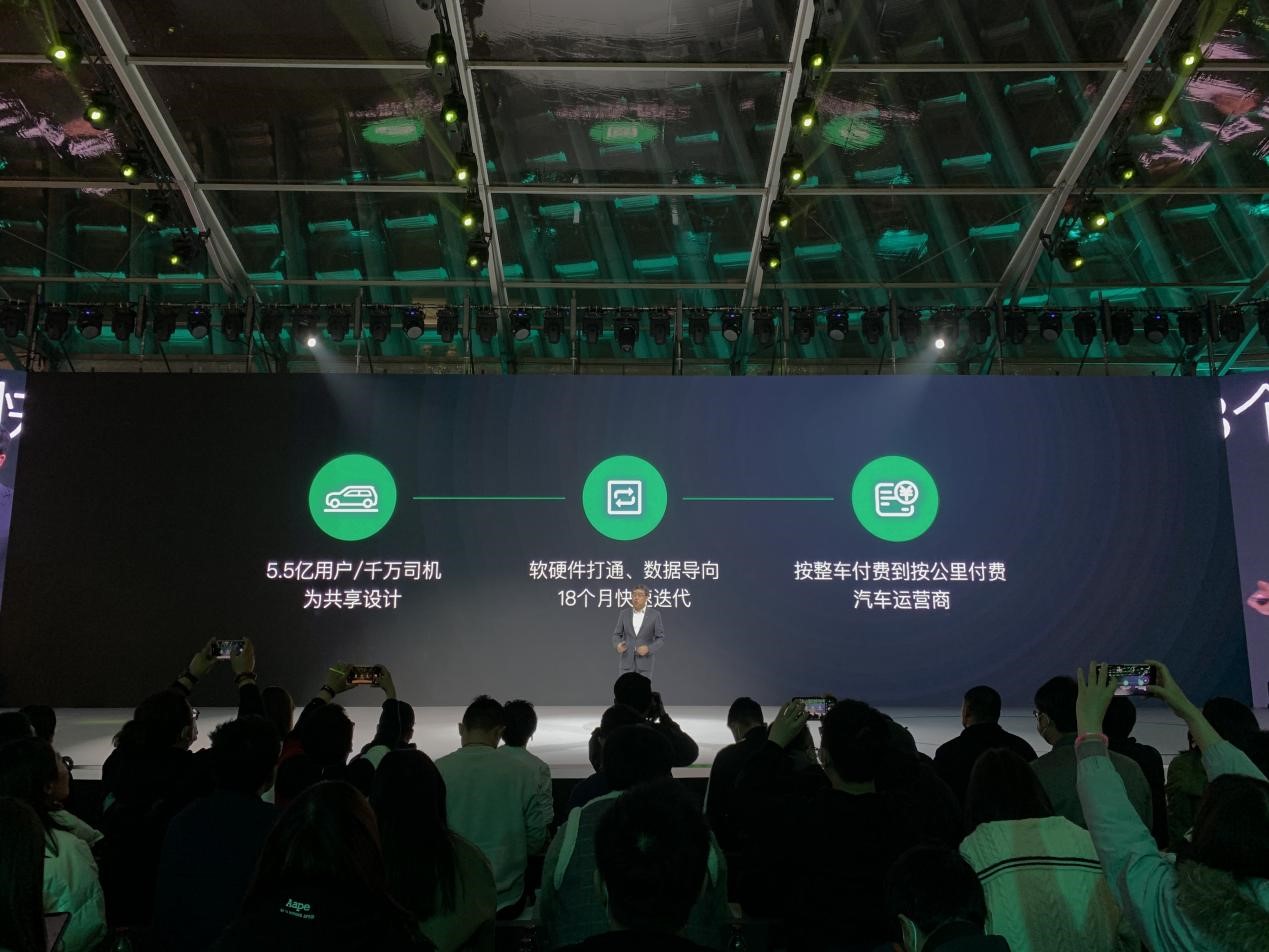On November 16th, DiDi held a “DiDi Open Day” and announced the D1, a customized car model for the transportation market.

After the car was unveiled, the entire venue was in uproar. How popular is this car?
At the launch event, I posted many Weibo posts about the D1, and there were many netizens asking if this car has plans for customer markets and some wanted to place orders immediately.

The car with outstanding appearance, designed from the perspective of demand, is so popular.
Back in the office, my colleagues and I marveled at how such a good product had not been done before.
After discussion, we reached a consensus: only DiDi can handle this matter.
After a day of thinking, I found that the D1 is not just a product, it also completes the entire closed-loop ecological layout of DiDi in the transportation market.
This car not only will reshape the transportation market, but also have a strong impact on the electric vehicle market.
According to DiDi’s plan, there will be one million D1s invested in the transportation market by 2025, which means the average annual production of the D1 will reach 200,000 cars. According to our information, D1’s planned shipment for next year will be in the six figures.
Now, let’s get back to the content of the launch event and start with the car.
D1 that meets transportation market demand
D1 is a pure electric MPV aimed at the transportation market jointly developed by DiDi and BYD.

From the fact that DiDi released this car, it can be seen that DiDi’s role in this collaboration is to define the car, while BYD is the manufacturer.
So the question is, why does DiDi want to define a car on its own?
There are two answers to this question:
- To enhance the user experience;
- To innovate the transportation industry.
On the D1, we can see DiDi’s summary of the past nine years of operation.
Appearance
During the launch event, DiDi defined this car as an A-class MPV model, achieving the size of an A-class car, the wheelbase of a B-class car, the space of a C-class car, and the convenience of an MPV getting in and out.

For ride-hailing drivers who need to shuttle through small streets and alleys every day, a smaller car size is their wish.The body size of D1 is 4390 * 1850 * 1650 mm, with a wheelbase of 2800 mm.
From the appearance point of view, D1’s length is 23 cm shorter than the ubiquitous Toyota Corolla used for ride-hailing, but the wheelbase is 10 cm longer.
As for the rear space, I also tried it for everyone. The traditional measurement method of several fists and fingers is no longer enough for this car. From my height of 174 cm, there is at least the space of a small arm for the legs.


As for the trunk space, even if there are users going to the airport or high-speed railway station, as long as you are not moving houses, it can basically meet your needs.

In addition, Didi has changed the right side door to an electric sliding door, for two reasons.
On the one hand, the opening method of the sliding door can provide a larger exit, which is convenient for passengers to get on and off, and the electric sliding door can also provide a better riding experience for passengers.

On the other hand, according to Didi’s statistics, 30% of the accidents in the ride-hailing industry are caused by opening the car door when getting off. The design of the sliding door can fundamentally solve this problem.
So why isn’t this good thing being used by more people?
Expensive.
First of all, the sliding door is already more expensive than traditional doors, and adding the electric opening and anti-pinch devices, the cost will be much higher than ordinary models.
However, for models targeting the individual market, the rear seats do not have high-frequency requirements for getting on and off the car, so it is difficult to provide such a “luxury” configuration for the “niche” demand in the 100,000 to 150,000 RMB price range.
But this configuration is particularly cost-effective for D1.
Although it is cost-effective, Didi also has its selection criteria because the cost must be carefully considered for high-volume models, not to mention such a “big item”.
Therefore, Didi only sets an electrically opened sliding door on the right side of the vehicle, where passengers frequently get on and off the car. For the left side door with almost no demand in the transportation market, Didi chooses a conventional door.
Due to market demand, D1 finally has this extremely rare door-opening form.
InteriorAs mentioned earlier, the rear seat is the most commonly used one and the space is extremely huge. However, it is not enough to have only a large space. The seat also needs to be comfortable enough. The seats in the D1 are not only the most comfortable ones I have ever sat in at this level, but also have the longest cushion length and the best support for the front of the thighs.
Of course, after I raised this point on Weibo, some friends also expressed their views, saying that the user group facing the ride-hailing service is very large and complex. Although a long enough cushion can bring a good riding experience to adult men, it is not friendly to small individuals and minors.

Although I cannot completely agree with this point of view, it makes sense. However, I believe that with the data collected by DiDi and their attitude of “18-month iteration one version”, even if there are problems, they can be quickly optimized.
In order to meet the needs of rear passengers, DiDi has also added seat heating, cup holders, USB charging ports, adjustable air conditioning screens, and more.

In addition to caring for users, DiDi also considers the needs of drivers.
At the press conference, DiDi’s development team stated that after they personally drove for a few days as “fast-car” drivers, they found that the current seats are too uncomfortable for drivers, and they can only sit for a few hours before experiencing severe back pain.
Therefore, in the D1 model, DiDi has specially customized driver-exclusive seats for driver masters, which are also the most expensive seats in the car and are equipped with 4 electric waist support. In ordinary car models, this configuration is basically only available in executive-level models.

After I actually sat in it, the driver’s seat was so comfortable that I even wanted to voluntarily become a driver.
So, as a D1 driver, it is also very fortunate.
Of course, this is not enough.
When I think back to our daily experience of taking a taxi, almost every driver has at least two mobile phones in front of them, and even like the picture below.

This is the current status quo of the transportation market.
It is not that the current car systems are so garbage, but because there is currently no car system that can meet the needs of DiDi drivers, they have to add countless mobile phone holders to their cars.
Now, DiDi has completely integrated these functions into the car system, and added an exclusive button, allowing driver masters to complete the operation such as taking orders without leaving the steering wheel.

The value of this function needs no further explanation, as it not only improves convenience, but also makes driving safer.
After the press conference, some friends from DiDi approached me for some suggestions. After seeing the actual car, the first word that came to mind was “comfortable”. However, after much thought, the only flaws I could pick out were “too much hard plastic” and “average screen quality”. But for the ride-hailing market, these are really not considered drawbacks.
For the ride-hailing market, the perception of hard plastic in the interior is not really an issue, as it is just a car that fulfills the need of getting from point A to point B. It is crucial to spend the limited BOM cost on improving comfort features such as electric sliding doors and seats.
Range
As for the range of this car, it has not been officially announced, as it is not something that concerns the average driver. However, seeing so many people in the comments interested in purchasing it for personal use, I asked on your behalf at the event. The D1 is equipped with BYD blade batteries, with an NEDC range of 418 km, which may not seem impressive, but it doesn’t have to be.
With access to such a large amount of travel data, DiDi can easily calculate a demand and cost-balanced plan.
Moreover, DiDi has been meticulous in the display of the range information. Do you remember the customized version of the car system that I mentioned earlier?
Based on the data connection between the car system and the vehicle’s ECU, DiDi states:
“By using intelligent big data and AI technology to analyze and statistically process data from various cities, road conditions, and driving habits of all of our drivers, the range data displayed on the infotainment system of each vehicle will infinitely approach the real data.”
Furthermore, DiDi can intelligently dispatch orders based on the remaining battery percentage, thereby eradicating cancelled orders due to insufficient electric range.
I have given a brief introduction of nearly 2000 characters, but you may wonder whether DiDi’s meticulous attention to detail ends here.
Other Highlights
For the sake of brevity, and since we will talk about how this car will subvert the ride-hailing market later on, I will briefly mention several other highlights.
Equipped with AEB, ACC
The only car in the same class that is equipped with these features.
Rainbow lights on the dashboard
It can intelligently display one of six colors based on surrounding vehicles, and is marked in the DiDi app. When many people are taking a ride together, you can easily identify your car from a distance based on the lights, making it much more convenient than looking at the license plate.
Vehicle can be controlled from the mobile appAfter calling for D1, you can control the air conditioning and seat heating inside the car through the DiDi app, set it to the temperature you want in advance, and no longer need to argue with the driver about turning on or off the air conditioning. The initiative is now in the hands of the passenger with D1.

Driver’s Briefcase
DiDi’s research found that many DiDi drivers carry a briefcase containing about 1 liter of water, Band-Aids, and heatstroke medicine. Now, DiDi has set up a special location for drivers to store their briefcases on D1 to meet their needs.
…
Going back to the question I asked my colleague at the beginning of the article: why hasn’t anyone done it before with such a good product?
Because car manufacturers didn’t understand the need for it and there was no such demand. So only DiDi could do it.
[Qi Xia, DiDi’s] Ambition
Although DiDi has made some trade-offs in the configuration, the cost of this car is still much higher than that of other ride-hailing cars in order to provide a better user experience.
So the question is, who will buy it after it becomes more expensive?
At the press conference, DiDi founder Cheng Wei announced, “D1 is the first car that is not paid for as a whole but by the kilometer“.

For the convenience of understanding, he gave two examples. Just like buying phone cards and getting a free phone, or like electricity service, pay according to electricity use; no need to buy a generator for everyone.
So it is very likely that DiDi will buy D1 and drivers will rent it and pay by mileage. This greatly reduces the entry threshold for DiDi drivers.
However, if DiDi also needs to scale up while buying D1, it will face huge financial pressure. Since DiDi has not yet announced the details of the operational plan, we will discuss this in-depth after D1 is officially launched.
Of course, the two screens in the back seat can already bring DiDi considerable revenue through advertising.
Here, I would like to discuss the value of D1 for DiDi.
At the press conference, DiDi founder Cheng Wei said that although from the beginning of 2012 to now in 2020, DiDi has increased its response rate and reduced its average wait time from 65% and 6 minutes to 95% and 3 minutes, respectively.
The experience of calling for a car has improved, and the experience of riding has improved even more with D1.
However, moving forward, Cheng Wei found that the “increasing number of private cars and limited road resources in cities” is an objective contradiction, and it is difficult for travel to become fundamentally better without solving this problem.
DiDi’s solution is to increase the utilization rate of individual vehicles.
This is Didi’s plan for the next 10 years.
As we can see, Didi divides the next 10 years into three stages: the first stage is to release custom car models, the second stage is to achieve autonomous driving, and the third stage is to achieve fully autonomous driving without a cockpit.
During this process, Didi is gradually reducing its reliance on drivers and eventually achieving true fully autonomous driving.
Currently, there are many travel companies researching pure autonomous driving, and many car makers developing autonomous driving technology, but what sets Didi apart is its fleet size.
Above the windshield of the D1, we can see a monocular camera and a dash camera. Although Didi did not disclose this publicly, we believe that these two cameras, in addition to fulfilling ACC, AEB, and dashcamera functions, will also be used to collect road data for autonomous driving research and development.

Didi made this move back in 2016.
In 2016, Didi officially established an autonomous driving technology research and development department, committed to creating L4 level autonomous driving technology.
In August 2019, Didi announced that its autonomous driving department was upgraded to an independent company, focusing on autonomous driving research and development, product application, and related business expansion.
Thus, Didi’s grand plan gradually became clear to us.
For autonomous driving research and development, in addition to having strong enough algorithms, there must also be sufficient data to support research and development. The more scenarios and complexities encountered, the more favorable it is for the development of autonomous driving.

Imagine a company that only focuses on autonomous driving, collecting data every day through dozens of road-test cars, and compare that with Didi collecting data every day through hundreds of thousands of cars on the road. The gap between the two will only widen.
After reading this, do you still think that Didi’s D1 is just a car that meets the needs of the transportation market users?
This article is a translation by ChatGPT of a Chinese report from 42HOW. If you have any questions about it, please email bd@42how.com.
